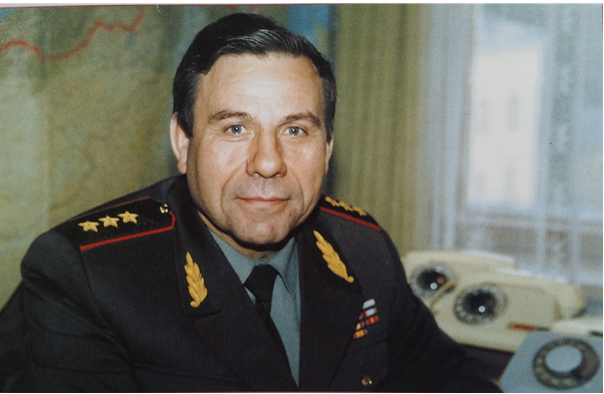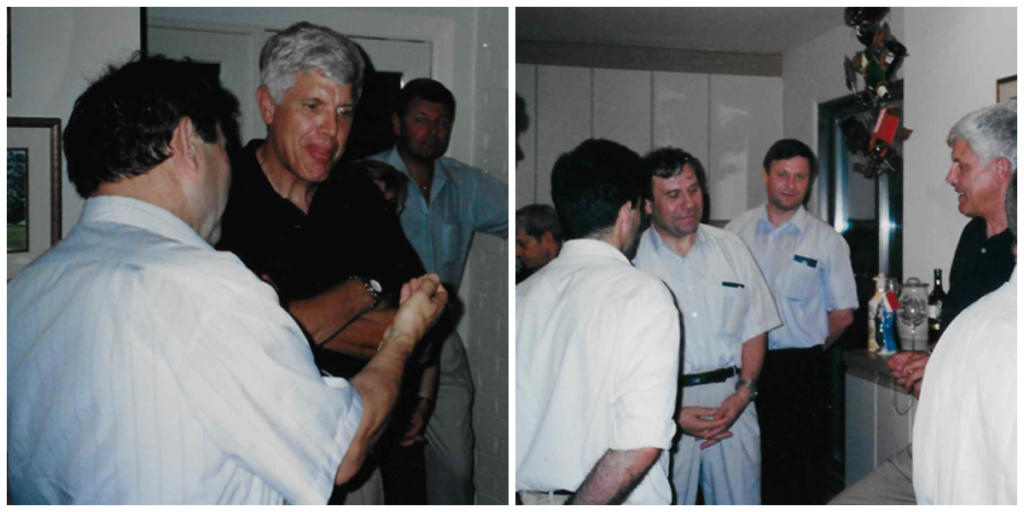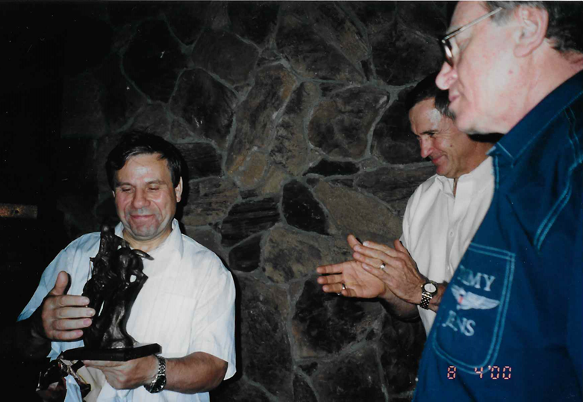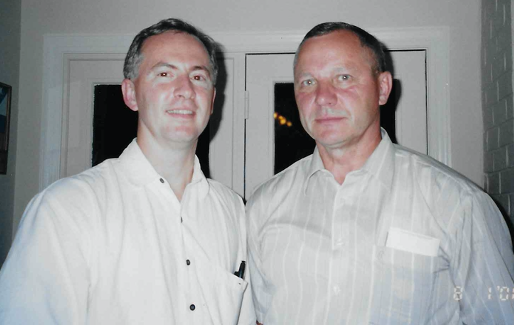Nuclear security cooperation can be one of the most useful tools for engaging with a former adversary because it represents a strong common purpose to protect nuclear materials from terrorist threats and unauthorized personnel. That shared goal can endure to maintain a relationship even during times of tension on other national security issues. These characteristics of nuclear security cooperation played a critical role in providing a strong foundation for the Cooperative Threat Reduction (CTR) program to develop positive relations with Russia in the early post-Soviet era. Nuclear warheads were the “crown jewels of Russian power and legitimacy, and cooperation supporting nuclear safety and security was among the most sensitive and critical of the CTR programs. A Russian Ministry of Defense (MOD) visit to FE Warren Air Force Base in 2000 illustrates a number of lessons on how to engage with a former adversary to develop a partnership and demonstrates the necessity of treating a partner as an equal in order to pursue a successful cooperation program.
Cooperation between the U.S. Department of Defense (DoD) and the Russian MOD on nuclear warhead security took several years to develop given the sensitive role nuclear weapons played in the Russian power base. It took three years from the establishment of the CTR Umbrella Agreement, and strong advocacy from General Colonel Evgeny Maslin – the Chief of the MOD’s 12th Main Directorate (12th GUMO) responsible for the nuclear warhead inventory – before MOD agreed to implementing agreements with DoD on nuclear warhead storage and transportation security. From 1995 until 1997, Gen. Maslin marshalled CTR cooperation providing procurement and delivery of nuclear security equipment to Russian nuclear facilities, including over 100km of security fencing and sensors and the creation of a centralized nuclear training center.
By 1997, with Russian sovereignty secure despite lingering economic problems, some Russian military leaders and commentators began questioning the continued need for U.S. assistance, especially support related to Russian nuclear weapons. Continued nuclear warhead security cooperation looked somewhat uncertain when General Maslin, the biggest MOD advocate for continued cooperation, reached mandatory retirement age and was no longer in place. In August 1997, General Colonel Igor Valynkin was appointed as the next Chief of the 12th GUMO.
Unlike his diplomatically discrete predecessor, General Valynkin was not interested in cooperation with Americans or DoD assistance on nuclear security that would imply any weaknesses in the security of Russian nuclear warheads. Despite entreaties from CTR leadership, General Valynkin refused to interact, or even conduct a telephone call, with any Americans for the first year of his leadership. When he finally agreed to meet, the meetings were abrupt and lacked the calm and polite diplomatic courtesies that had come to characterize earlier CTR meetings with Gen. Maslin.

Instead of meeting with the Americans, Gen. Valynkin visited each of his nuclear weapons storage sites to review the state of nuclear security and to inspect how the installation of CTR-provided security fencing was progressing. Before his visits, 12th GUMO officers had complained to the CTR program managers that MOD lacked funding for 12th GUMO Headquarters staff to visit sites in person and that there had not been a comprehensive senior level visit to the sites in years. Legend had it among the 12th GUMO officers that Gen. Valynkin returned from his review and promptly fired 17 Site Commanders of the approximately 40 sites he visited. To put this in perspective, that would be equivalent to the U.S. military firing over 42% of its most senior Site Commanders. Such an unprecedented move for the nuclear weapons force strongly burnished Gen. Valynkin’s hardcore reputation that was often compared to that of Admiral Rickover in the early U.S. nuclear Navy. Gen. Valynkin wanted nuclear security at his sites improved and, recognizing that his best officers had shown themselves incapable of providing such enhancements, he turned to the CTR program for further cooperation – but only on his terms.
The problem was that the sites were having difficulty installing the fencing to the specifications required for the security sensors to be tuned, calibrated, and put in good working order. The Russians were installing fencing at their sites at a rate of 20km per year – not nearly fast enough given that CTR had provided 123km of fencing to protect all the warhead storage sites. At the same time, CTR was working with the Russian security specialists to design and define a comprehensive suite of security equipment at the Security Assessment and Training Center (SATC) in Sergiev Posad, Russia, which included a central control room and cameras. If the Russians could not properly and quickly install and tune the fencing and sensors, the notion of implementing comprehensive security systems at each of the sites seemed far-fetched without CTR cooperation on installation. CTR was ready and willing to provide installation contracts to meet Russian requirements but CTR contracting officers could not legally sign such contracts without having some way to monitor the work and ensure it was actually accomplished and done properly. Still, Russian law would not permit Americans access to these facilities. The notion of the Russians allowing the United States access to these most sensitive warhead storage sites was well beyond anything the United States and Russia had agreed to under any arms control treaty or CTR program. Numerous technical talks ensued to explore potential site access provisions with little progress.
While CTR was pursuing site access to enable the installation of enhanced security systems at Russian nuclear warhead storage sites, the U.S. DoD and the Russian MOD were seeking closer contacts on nuclear weapons security based on common concerns regarding nuclear terrorism. Led by the Commander of the U.S. Strategic Command, Gen. Eugene Habiger and the Russian Minister of Defense, Marshall Igor Sergeyev, the United States and Russia arranged for reciprocal visits to each other’s nuclear weapon storage sites. The Russians visited a U.S. nuclear weapons storage site in 1997 and Gen. Habiger visited a Russian site near the city of Saratov with his CTR interpreter, Mike Skidan, in June 1998. The Russians wanted to use the visit to demonstrate that their sites were secure and to engage with the United States as an equal party.
The Russians agreed to allow a visit to a former nuclear weapons storage site that had recently been closed near Tula, Russia. Gen. Major Frolov escorted me to the site, where we conducted a mock walk-through to demonstrate exactly what CTR would need to see to establish installation contracts. After that visit, CTR began exploring potentially inviting Gen. Valynkin to a U.S. site to continue the dialogue. In a teleconference conducted on 18 January 2000, the CTR Director, Gen. (Ret.) Kuenning invited Gen. Valynkin to visit the U.S., brief Congress, hear how the program supports security, and “in the spirit of openness, we would like to show you one or two nuclear weapons storage sites in the U.S.”1Quote is from the author’s talking points prepared for the teleconference. Gen. Valynkin let CTR know that such a visit could not include congressmen and that there should be no mass media. In May, CTR and DoD had not settled on a site for his visit but they did let Gen. Valynkin know that it would probably be FE Warren Air Force Base.

The Russian delegation arrived in the United States on Sunday, July 30, 2000 for a one-week visit. The process for hosting Russians was for DTRA to issue U.S.-funded “invitational travel orders,” which provide travel, hotel, and per diem compensation to the traveler – standard procedure for government and non-governmental travelers. Russian travelers would usually bring food with them and use the per diem to shop for U.S. goods. Gen. Valynkin, however, would have none of that. He refused the per diem and forbid his delegation from accepting the funds (later the other officers in the delegation made arrangements to collect their per diem) noting that he wanted to avoid any perception that the Russian officers were taking money from the U.S. government. Before departing for F.E. Warren, the Russian delegation visited the Pentagon City mall for an excursion, but Gen. Valynkin only visited a discount shoe store in Falls Church with our interpreter, Mike Skidan, to purchase an inexpensive pair of running shoes for about $12. We learned that Gen. Valynkin was an avid runner, and the delegation told us that he ran 10km every day, even when he was traveling to the islands of Novaya Zemlya in the Arctic Ocean. We were skeptical until Gen. Valynkin asked to go for a run after arriving at FE Warren. The Air Force required that escorts accompany Gen. Valynkin during his run on the base. We found out that the Russian delegation was not exaggerating about Gen. Valynkin’s running when the 58-year-old proceeded to leave all of his escorts in the dust as he completed his run in the new shoes.

The base provided a tour and demonstration of the Air Force convoys that accompany and escort nuclear weapons ground transportation. Gen. Valynkin noted the similarities and differences between the Air Force and 12th GUMO convoys. 12th GUMO shipments covered much larger areas and longer routes requiring more planning and escort vehicles to provide fire protection and recovery operations support. These vehicles would travel with the convoys for faster response. In contrast, the Air Force convoys could rely on response vehicles from the base or from the local communities if required to respond to an accident or incident.
One of the highlights of the visit was a demonstration of an Air Force exercise responding to an intrusion into the base by unauthorized personnel. The Air Force simulated an intrusion conducted by two “protesters” cutting through an outside fence to enter the facility. The exercise was designed to peacefully apprehend the protesters and emphasized the need for careful public affairs responses to the incident. Gen. Valynkin and the Russian delegation were perplexed by the demonstration – they had expected to see a terrorist threat scenario more appropriate for the Russian nuclear security experts. Gen. Valynkin could not understand why the Air Force did not intercept the intruders immediately upon discovering them at the fence line. When the Air Force security team allowed them to enter the facility, Gen. Valynkin asked, “Why aren’t you shooting them? They’re entering a secure area. How do you know they are protesters?” This was pre-9-11, so the U.S. leadership explained that the scenario was a more likely scenario that was currently the focus for their guard forces – and largely dismissed his comments.
The second nuclear security demonstration involved a force-on-force exercise using the latest laser technology (Multiple Integrated Laser Engagement System – MILES) to simulate the guard force capability to defeat an armed intrusion. CTR had conducted preliminary technical discussions with MOD on guard force capabilities and various training systems were under discussion, including the MILES system. Unfortunately, the demonstration did not go very well and the sensors did not effectively pick up the lasers. Instead of MILES, the 12th GUMO worked with CTR to provide a Russian-built Small Arms Simulator System (SATS) and Live Fire training equipment for their firing ranges.
The last part of the tour involved escorting Gen. Valynkin to view the security system at a storage bunker. The Air Force had approved Gen. Valynkin to visit the bunker, but not to go inside. So, when he requested to view the interior security, he was initially told that such access was not approved. Gen. Valynkin used this occasion to press hard for access, citing Gen Habiger’s previous visit to a Russian storage bunker. This exchange created a tense stand-off for about 30 minutes as senior Air Force and Pentagon officials contemplated the request. Finally, the 4-star General who was the most senior officer among the Air Force delegation, made some calls back to Washington and granted permission to let him inside.
Following the visit, some of the Russian officers expressed their appreciation for all the efforts that went into planning and executing the trip, but they also shared the sentiment that they did not feel that the Air Force leadership seemed very interested in listening to the Russian comments and discussions during the visit. They were impressed by the quality of life at the base, but were disappointed that the demonstrations were one-sided, oriented to share a glimpse of U.S. nuclear security, but not to conduct a bilateral exchange on best practices and shared concerns. From the U.S. perspective, Gen. Valynkin was perceived to be overly demanding during the visit. Later, when Gen. Valynkin hosted Senator Lugar and Gen. (Ret.) Kuenning for similar visit to a site near Saratov, Gen. Kuenning noted that the access accorded them was “not truly reciprocal because only the two Americans were permitted in the bunker.”

Despite the different perspectives, CTR cooperation continued, working hard to create a partnership of equals as much as possible. At the time, the Chief of the 12th GUMO reported directly to the President – similar to how the U.S. Chairman of the Joint Chiefs has direct reporting authority to the President. The CTR delegation witnessed several instances when Gen. Valynkin was called away from CTR meetings to report to President Putin. Over the next year and a half, Gen. Valynkin personally presented his case to President Putin to allow CTR access to Russian storage facilities under his conditions. Finally, in early April 2002, the CTR program learned the news during a phone call with Gen. Major Frolov that the Russian government had decided to permit CTR access to Russian nuclear weapons storage sites in order to implement enhanced security systems at the sites. The agreement was the result of years of technical discussions and exchanges and was only possible after Gen. Valynkin was convinced that the CTR cooperation was truly intended as a partnership to provide enhanced security for the Russian nuclear warhead inventory. His visit to FE Warren was not perfect, everything did not go exactly as planned, but it did demonstrate U.S. willingness to consider Russia as a nuclear security peer.

This episode clearly shows how important nuclear security cooperation can be to engage with former adversaries to build a partnership. Gen. Valynkin’s visit to a U.S. base and access inside a storage bunker was a key milestone that displayed U.S. respect for him as a peer, and demonstrates how critical it is to treat cooperative partners on an equal, reciprocal basis as much as possible. Without the visit, it is unlikely Gen Valynkin would have put his reputation on the line with President Putin to grant CTR technical teams access to Russian storage sites. In fact, greater benefits may have been possible if this lesson had been pursued more fervently. U.S. nuclear security experts may have missed the opportunity to listen to the 12th GUMO and learn more about how the Russians trained to respond to a terrorist incursion, how they prepare and equip their convoys with additional vehicles, and the potential benefits and attributes of the Russian SATS training system.
The author would like to thank Gen. (Ret.) Thomas Kuenning and Mike Skidan for their comments and inputs to this article.
Notes
- 1Quote is from the author’s talking points prepared for the teleconference.


